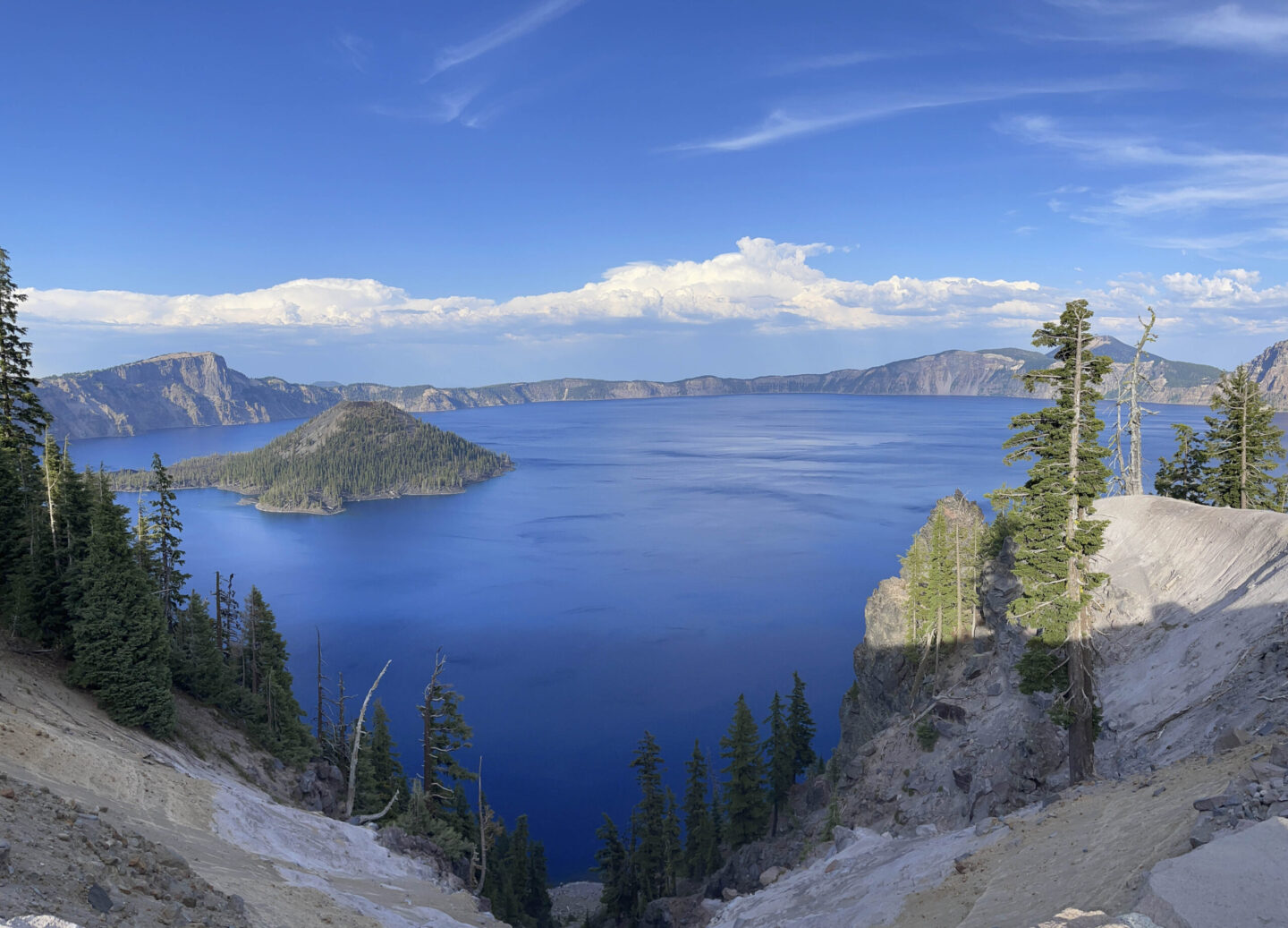The same natural forces that once made Yellowstone National Park so scenic also made Island Park similarly beautiful. Island Park sits in the world’s largest caldera, 23 miles in diameter, created from a volcano that collapsed in prehistoric times. Today, the area is covered in dense pine forests and is popular for hiking, fishing, cross-country skiing, and snowmobiling.
This year we changed our Yellowstone “base camp” to Island Park, Idaho. On Friday, September 11, we moved to the Red Rock Campground in Island Park, ID. The CG was farther from the park than we usually stay, but, it had excellent reviews as well as high recommendations from fellow Tiffin owners.
Upon arrival, we found the campground owners to be extremely friendly and informative. They provided us with maps and suggestions for several sights to see in Island Park: Henry’s Lake, Earthquake Lake, Mesa Falls, Big Spring.
Exploring the Area
Henry’s Lake was located very close to The Red Rock Campground so that was our first stop. It was a high mountain lake popular with anglers and boaters. Anglers fish for cutthroat, brook and rainbow-cutthroat hybrid trout. We got out of the Jeep and walked to the water’s edge. It was very quiet with only a couple of boats visible.
[Best_Wordpress_Gallery id=”79″ gal_title=”henrys lake”]
Earthquake Lake was our next stop.
On 8/17/1959, one of the most powerful earthquakes ever recorded in the Rocky Mountains struck the Madison River Canyon. The earthquke measured 7.5 and triggered a massive landslide sending 80 million tons of rock down into the canyon, blocking the Madison river. The water backed up behind the slide and formed Earthquake lake.
Hebgen Lake is situated past Earthquake Lake. At the time of the 1959 earthquake, the earth’s crust dropped 19 feet. The land under Hebgen Lake tilted upward, and cabins on the north shore were immersed in water, while the south shore remained high and dry. Three sections of highway 287 fell into the lake. Hundreds of vacationers were trapped and a total of 28 lives were lost.
[Best_Wordpress_Gallery id=”80″ gal_title=”Earthquake Lake & Hebgen Lake”]
Big Springs is one of the 40 largest natural springs in the world. One hundred twenty million gallons of water bubble up into the water each day and create the headwaters of the Snake River. The springs remain a constant temperature of 52 degrees. It is home to rainbow trout, muskrats, ducks, moose and other critters. We only spotted a few trout and several ducks.
Located on Big Springs, is a log cabin built by German Immigrant, Johnny Sack. The cabin took approx 3 years to complete with hand tools. Johnny built a small structure and water-wheel at the edge of the springs to create electricity. Unfortunately, the cabin was closed for the season so we could only get a glimpse of the cabin and waterwheel from the road.
[Best_Wordpress_Gallery id=”81″ gal_title=”Big Spring”]
Mesa Falls
We drove on the Mesa Falls Scenic Byway to view the Upper and Lower Mesa Falls. We were surprised to find a very large canyon. We walked on the pathway leading to a boardwalk to the brink of the Upper Falls. The Upper Falls are 112 feet high. After taking in the spectacular sight, we visited the Visitor Center, which was originally the Big Falls Inn in 1916. Inside the center, we were able to view and touch several species of animal pelts.
Next we drove to the Lower Falls Overlook. The view was fantastic!
[Best_Wordpress_Gallery id=”82″ gal_title=”Mesa Falls”]
I am guessing that most folks don’t visit Island Park since it is so close to the main attraction of Yellowstone National Park. We are glad that we got to visit some of the spectacular sights in the area, places most people never see!
A few years ago we snowmobiled in Island Park and had the opportunity to see a different side of the area. It is astonishing how different a place can look with/without snow!
